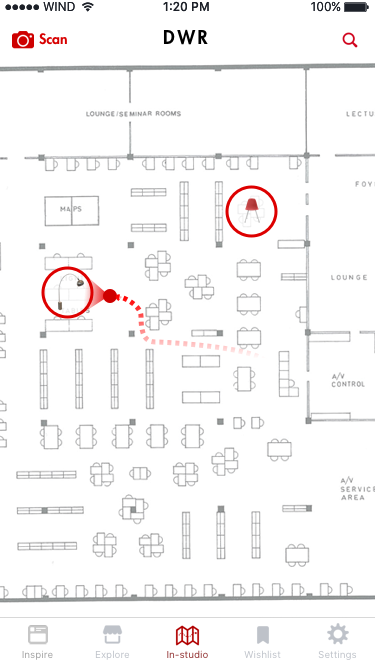
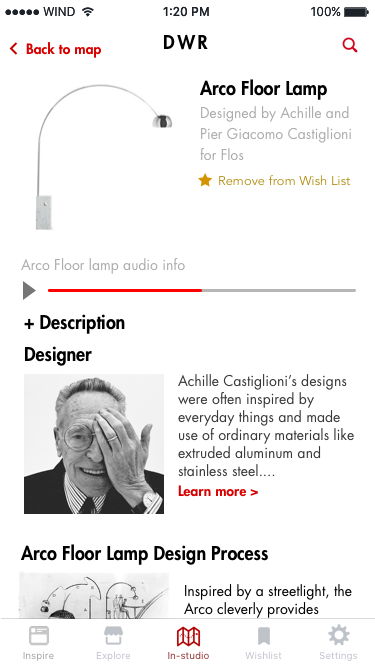
For this four week academic project, my team and I were tasked with using experience design to enhance Design Within Reach's business, through a digital intervention.
Design Within Reach (DWR) is a high-end furniture retailer that specializes in selling authentic modern designs from around the world in North America.
Our proposal, DWR Selections, is a digital application that allows customers to discover and learn about the stories and behind each product, through a series of curated tours within Design Within Reach's retail stores. It helps new customers to easily find inspiration and discover pieces that match their personal taste.
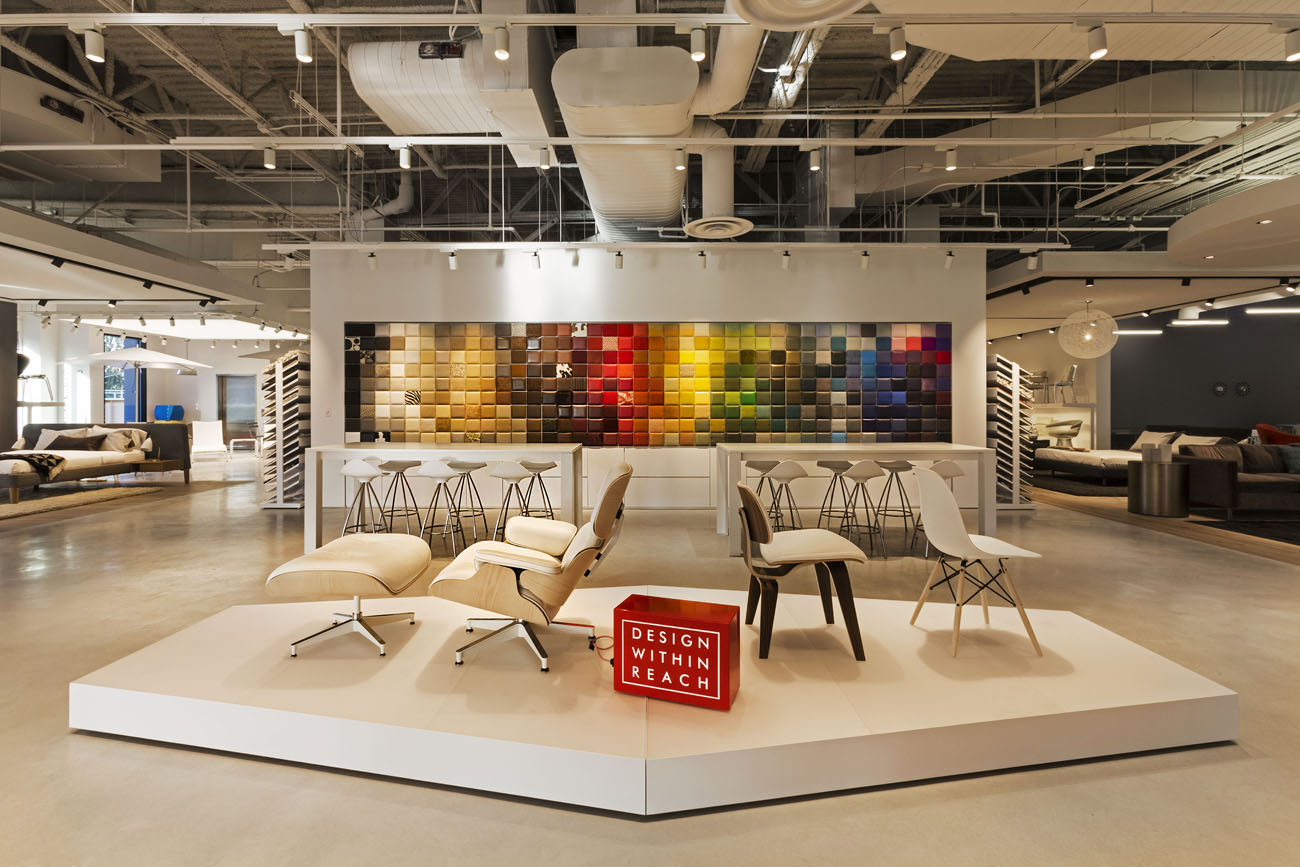
I helped with researching DWR’s business, forming the initial concept for the application, and supporting the app concept with further research. I also helped with designing the overall user flow through the app, creating wireframes and mockups, writing content, creating prototypes, and producing the final showcase video.
In the early 2000s, Design Within Reach was well known as a leader in design education and taste-making. However, due to poor leadership decisions, DWR began selling knockoff designer products, which ruined their reputation in the market, and broke their trust with the design community.
Although the knockoffs have been discontinued, DWR continues to be seen as a brand with a tainted reputation, and distanced from their core value of authenticity. As a result, we focused our efforts on answering this question: How can DWR re-emphasize the stories and designers behind their authentic products, in order to stand out in the furniture market?
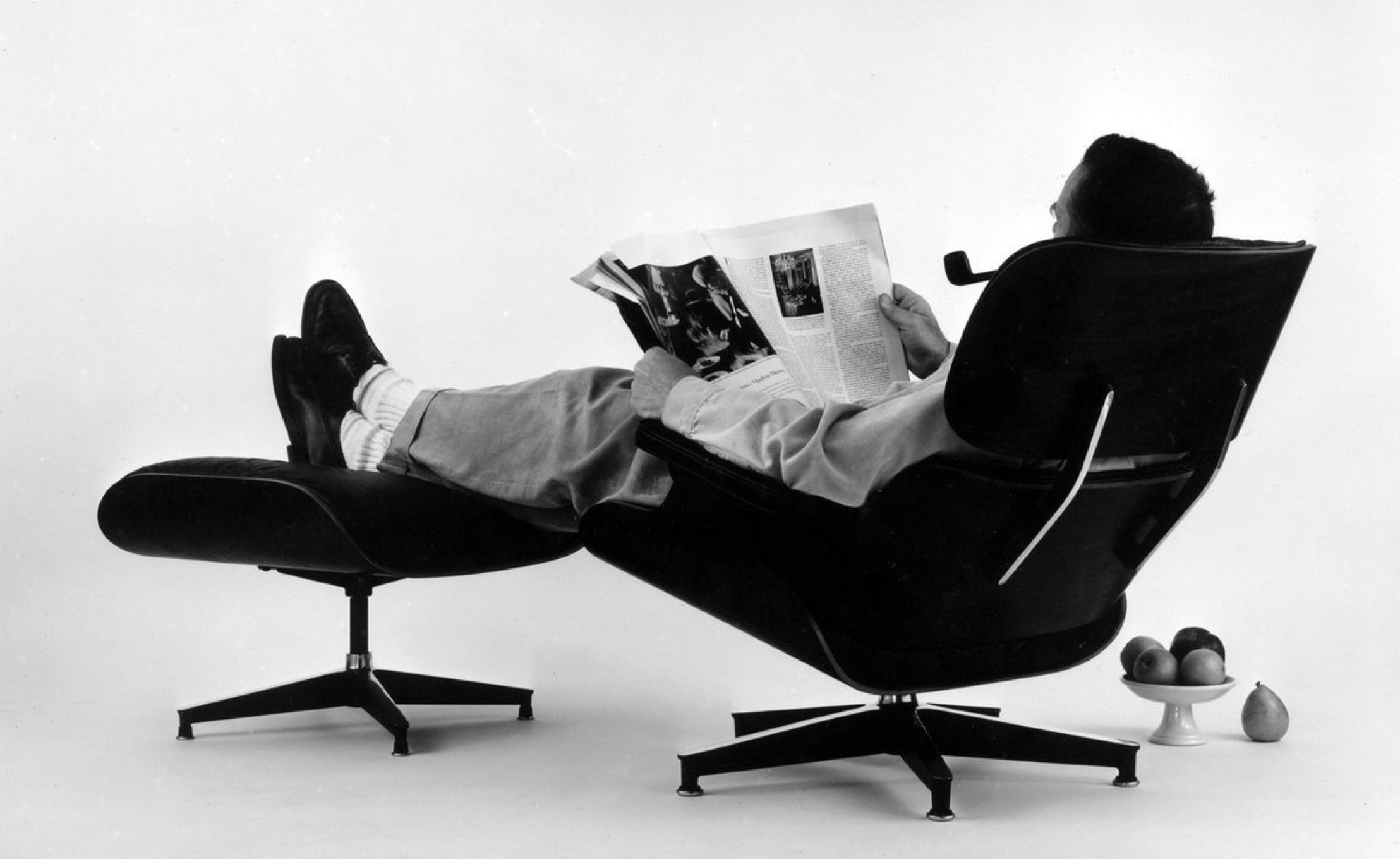
Everyday shoppers don’t know why DWR’s products are special, and why supporting designers of authentic products rather than knock-off brands is important for the future of design. My team and I aimed to address this key business problem through a digital medium.
With this goal in mind, our team searched for information and statistics that would help us understand modern shoppers and their habits. We found a study by Think with Google which highlighted the pain-points and behaviours of modern shoppers. Google’s report showed that our target audience frequently uses their mobile devices in-store while browsing to find further information such as customer reviews, picture comparisons, and similar items.
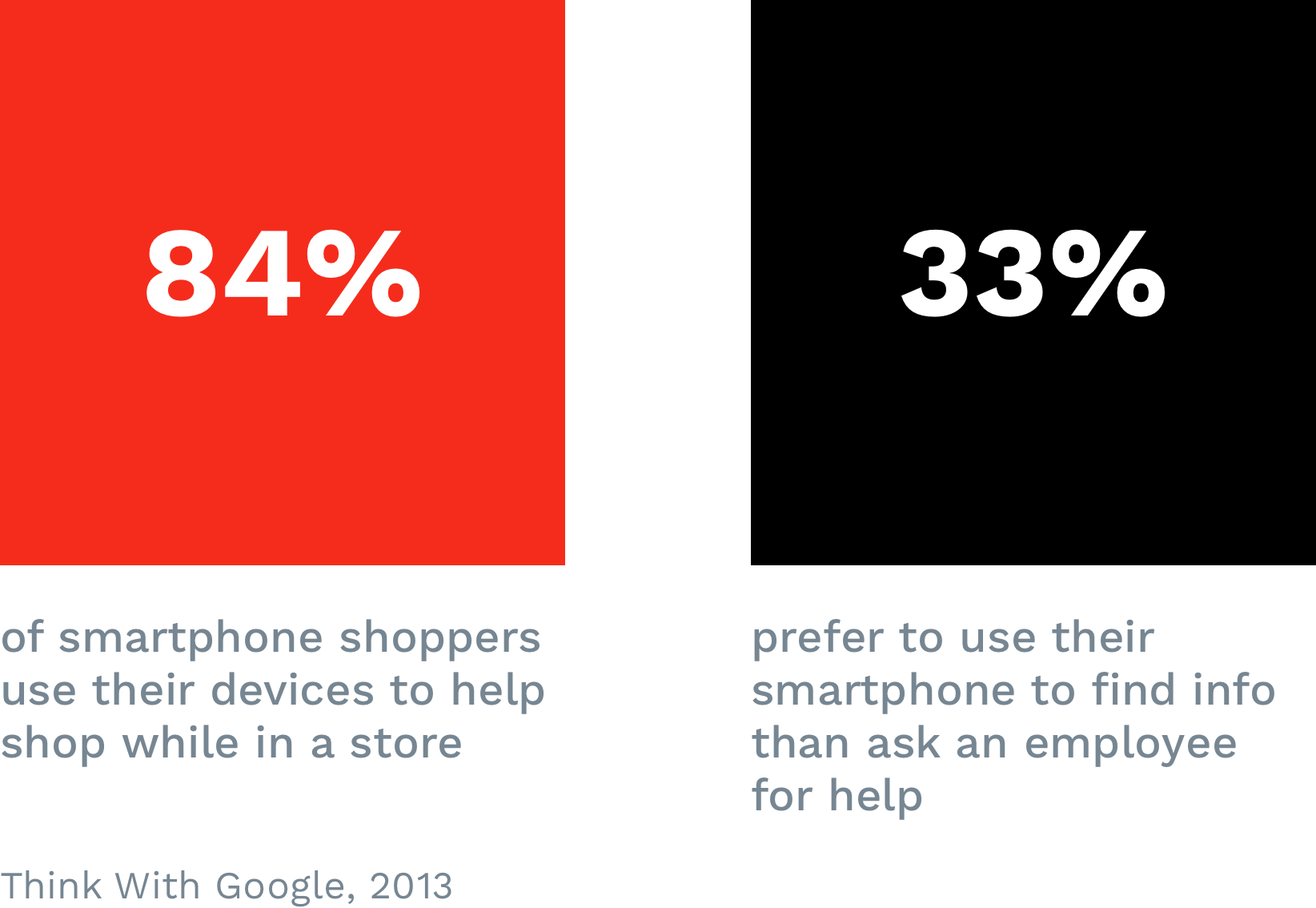
After discussing with sales associates at Inform Interiors, a local store in Vancouver that sells some of the same products as DWR, we found out that new customers are also intimidated by the sales associates and would rather browse on their own before approaching. We used these insights to guide our design process.
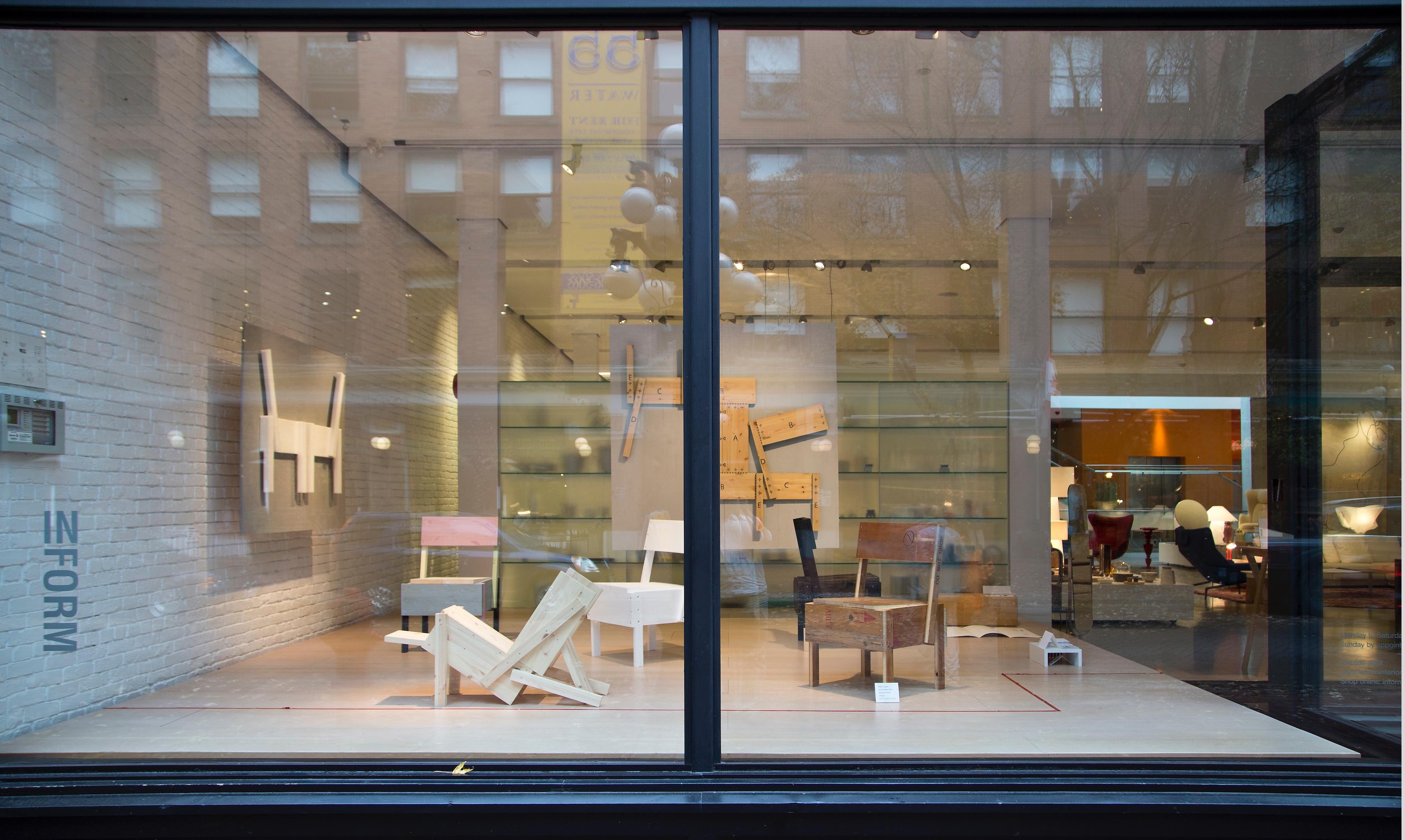
Following the Google Design Sprint process, our team the business model using sticky notes and markers on a whiteboard. This exercise allowed us to highlight the various "actors" and map their interactions within the DWR ecosystem. Through this, we were able to determine areas where we could intervene in order to improve DWR’s business.
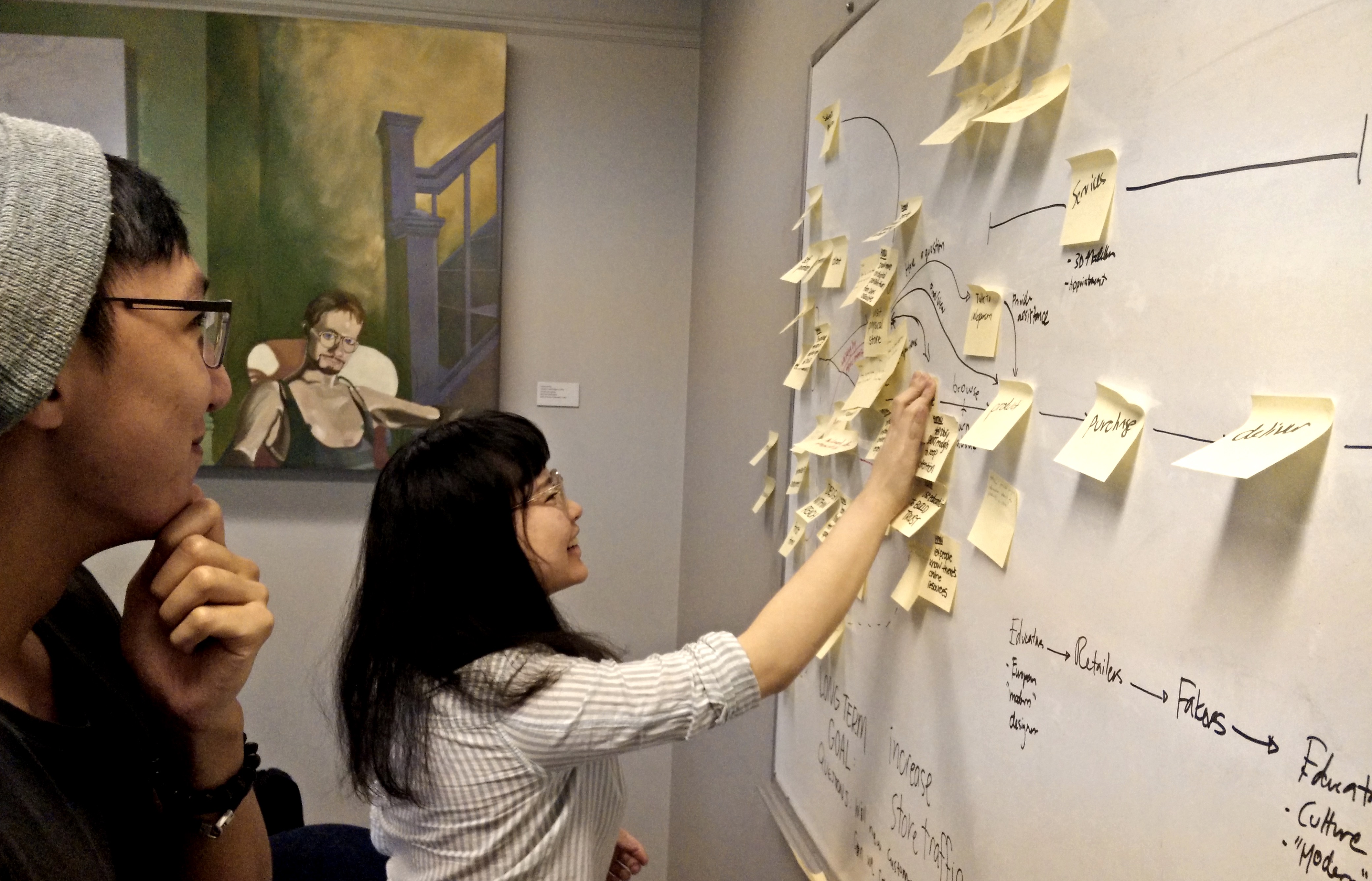
Next, my team and I sketched out a variety of ideas ranging from VR showrooms to tour guide apps. We wanted to quickly explore as many different ideas as we could, to bring creativity and a look for a variety different approaches with our solution to the business problem. We sketched out user scenarios detailing the experience, use case, and technological specifications.
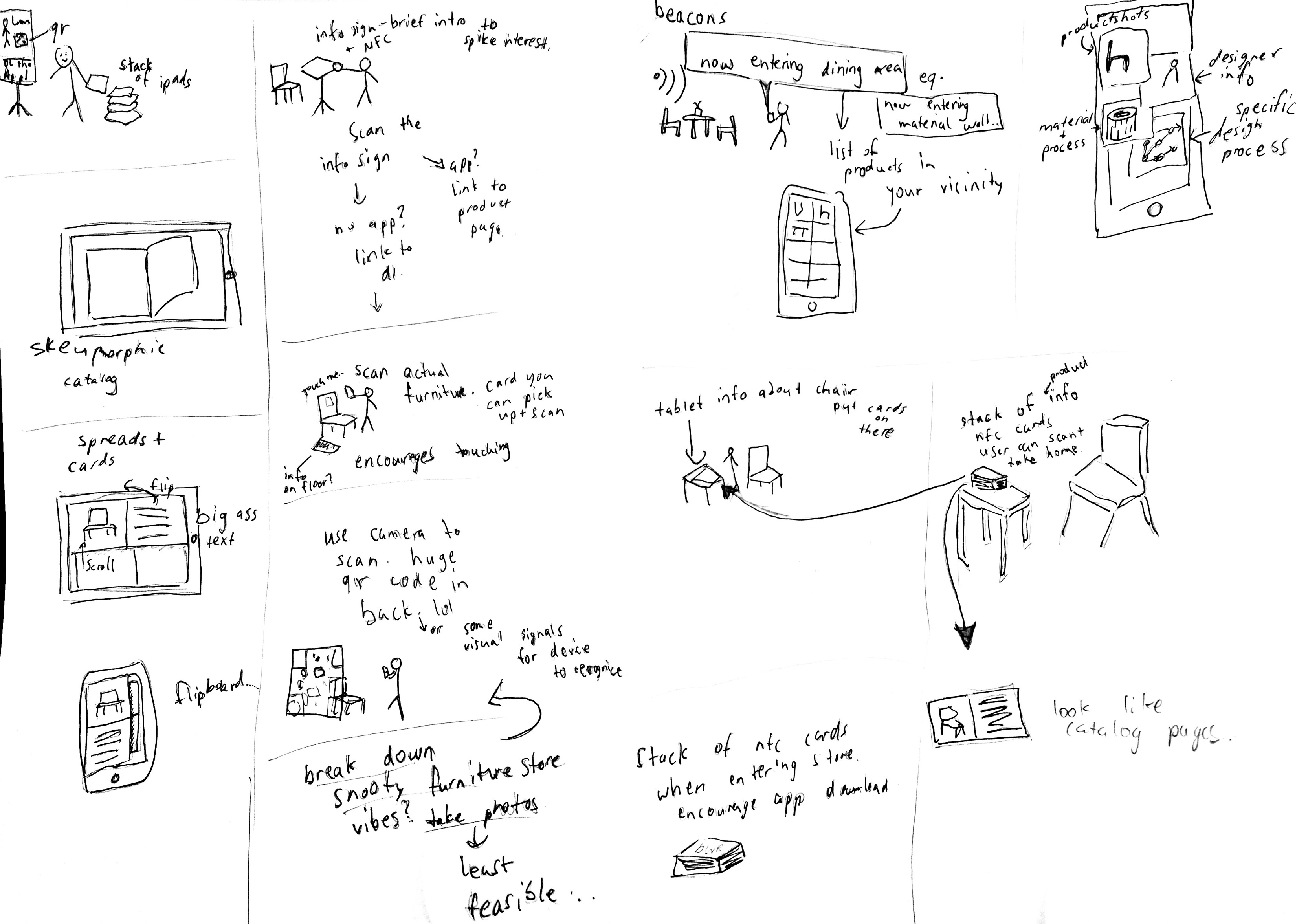
I came up with the idea of recommending users products based on their preferences before coming to the physical store, and then guiding those users to those products they're interested in once they've arrived. I made these mockups into a quick prototype to illustrate the idea.
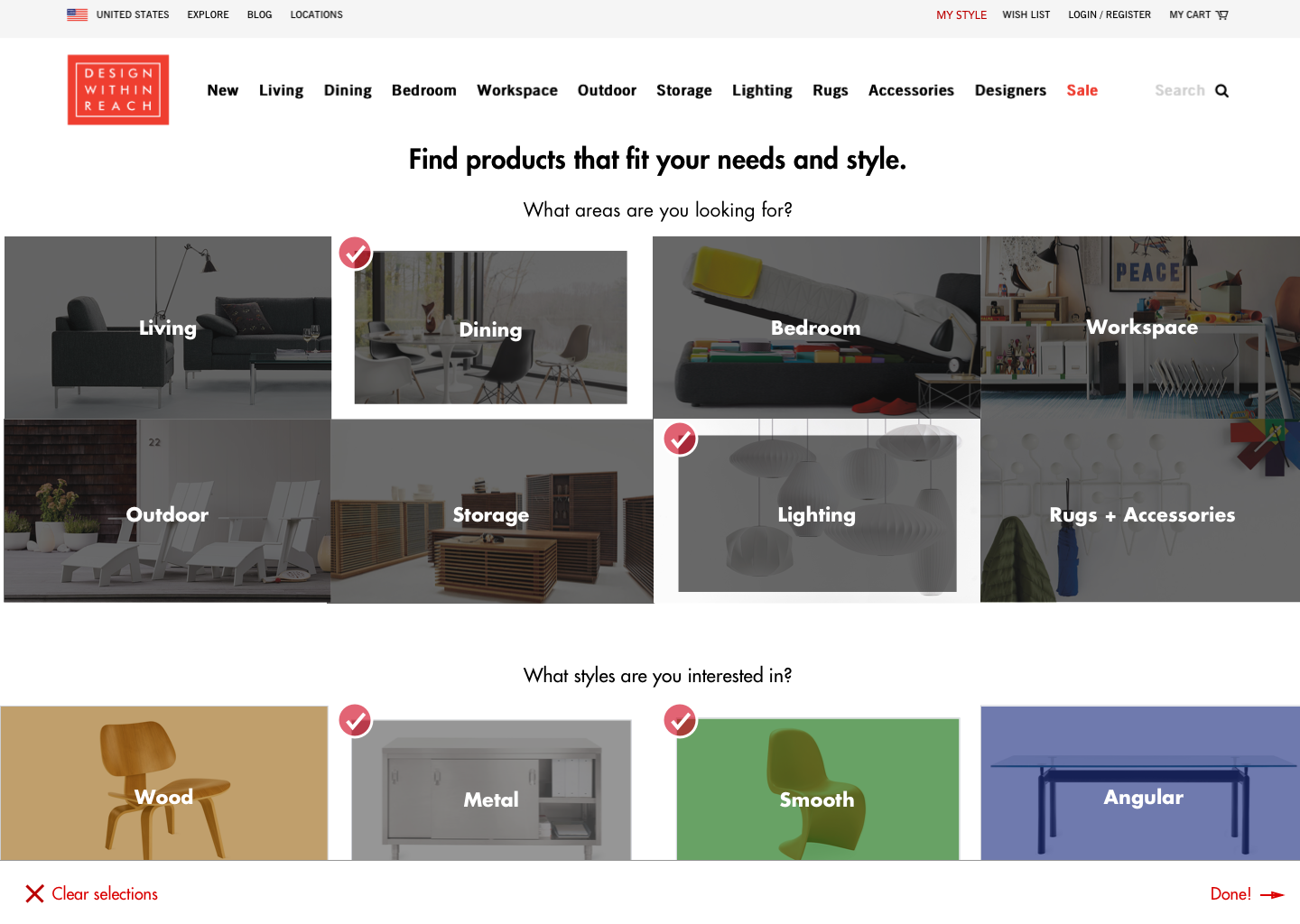
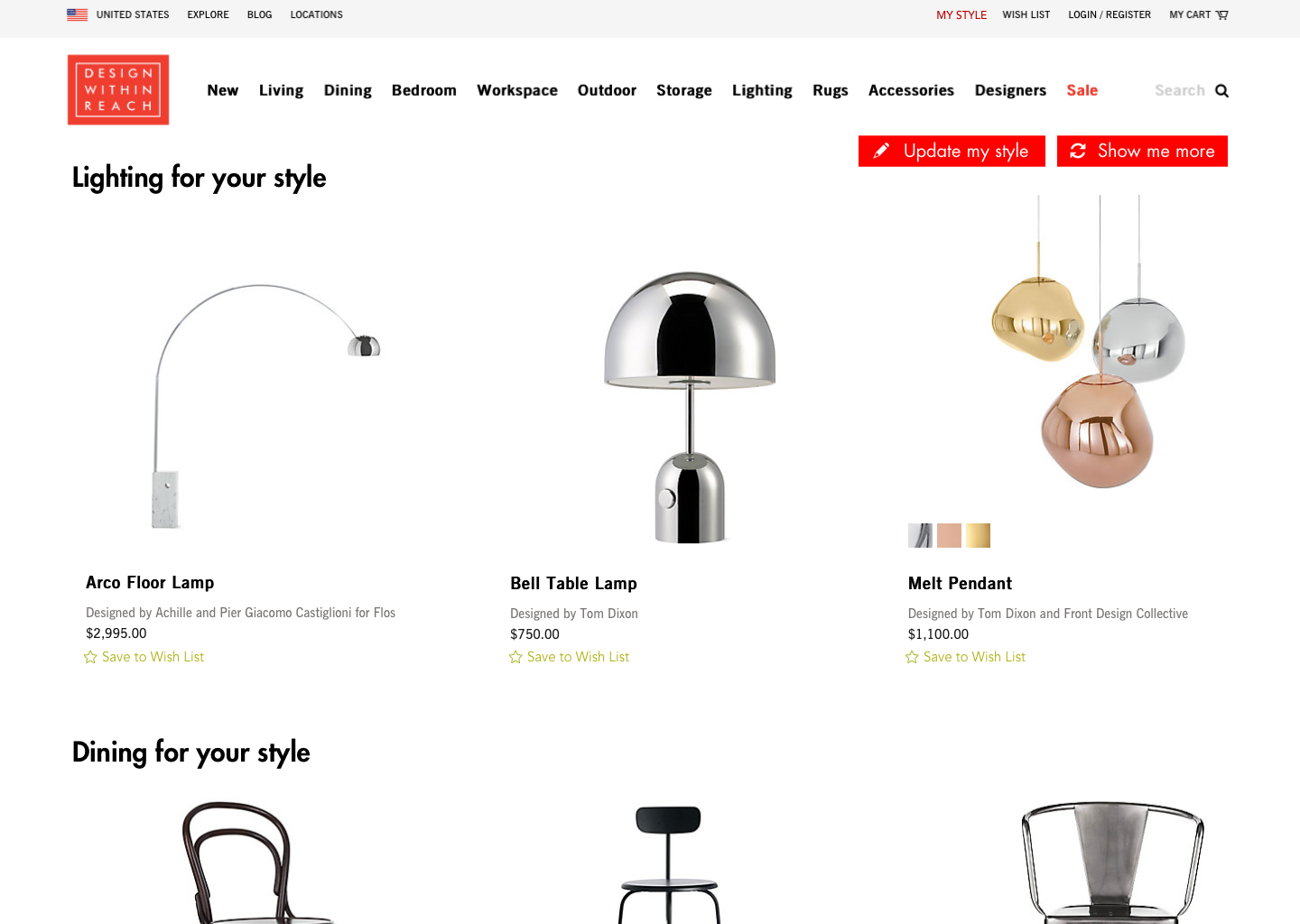


However, we quickly realized that it would be very difficult to get customers to learn about DWR's website, sign up, and download an app before coming to the store, especially for our target audience of people not too familiar with designer products. We needed a refined target audience – so we instead set a goal to convert window shoppers who are: curious about design into customers who have a deeper understanding of DWR’s brand and product values.
With this new goal, and based on our research, we determined a persona to represent our target audience, who are consumers who not too familiar with design, but are interested in learning more. They are people who may walk by Design Within Reach retail stores regularly, but are unfamiliar with the brand and its products, and have probably haven't entered the stores. We want to help Design Within Reach attract these potential new consumers, and transition them to loyal return customers which would help revitalize the company's brand.
Here is the persona that we came up with:

Susanna is 33 and a Lead Project Manager at a local advertising agency in Seattle. She is open to trying out and learning new technology and software. At work, she is surrounded by creative individuals leading her to gain an interest in design outside of her discipline.
She frequents furniture retailers like IKEA and Crate & Barrel, and that has been her perception of good design. However, she has reached a financially stable time in her life and is ready to invest in better quality pieces for her home. She wants to appreciate and learn more about furniture design.
We constructed a framework for our new target user, by looking at the journey of the customer experience, specifically in DWR’s retail environment. We identified the key frictions and potential touch points for intervention, specifically in the first interactions with products, and developed our interface around these points.
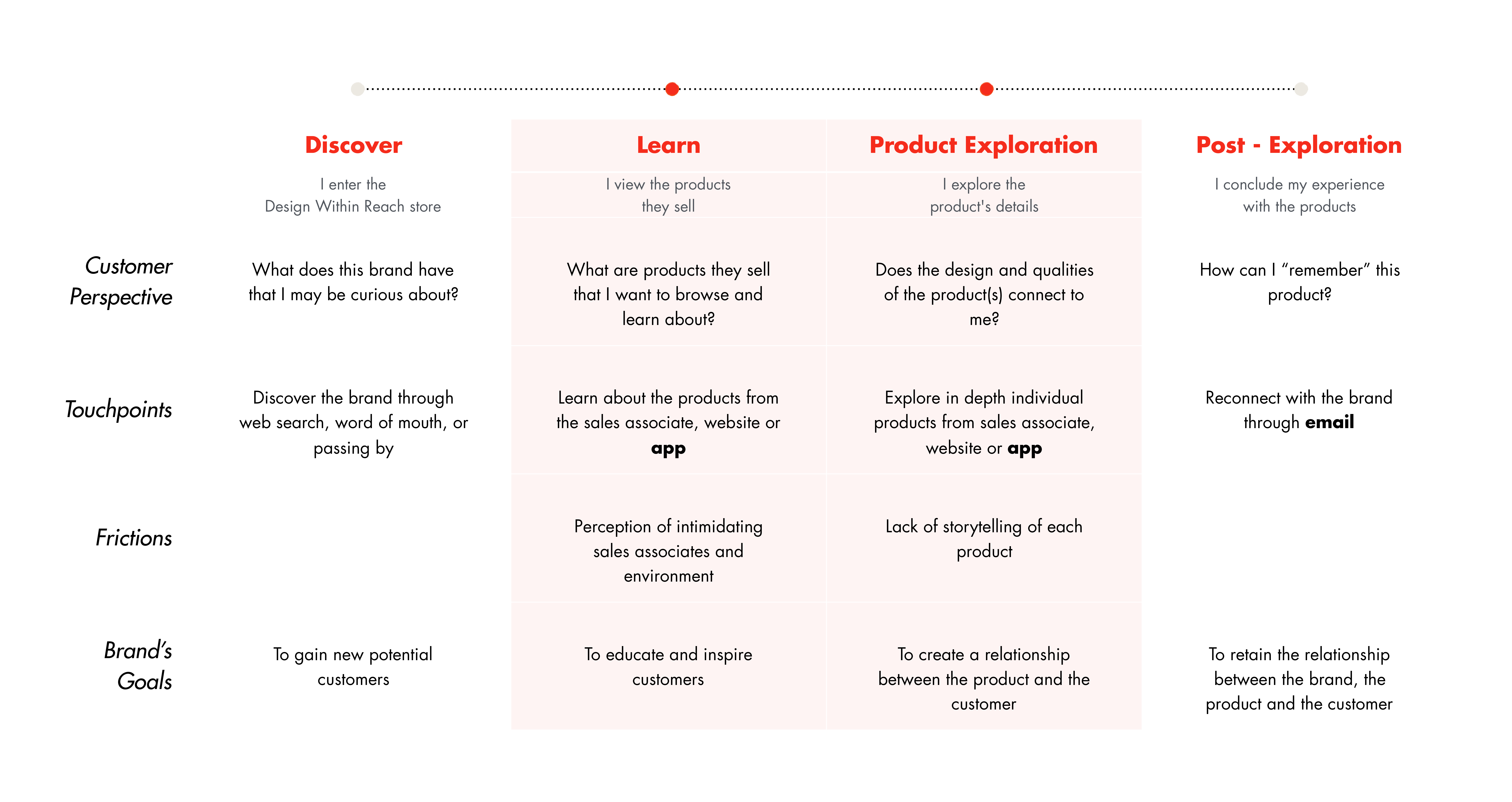
Once the user enters the store, they will be provided a mobile device with the DWR Selections app pre-installed, or they can download the app themselves. Users will be prompted through a quick onboarding to show them how to use the app.
After the onboarding, users can browse through various curated tours categorized into three types to help DWR highlight different types of products.
"Best Of the Month" is specifically created by DWR to inform and inspire customers about latest design trends. This allows DWR to prove their reputation as tastemakers and educators of modern furniture.
“Our Top Picks” is curated locally by in-store employees to highlight their personal recommendations and showcase their knowledge. This also helps users potentially connect with employees who may share a similar taste in design.
“Exclusive Products” enhances DWR's continued relationship with the design community, by they highlighting the new works by DWR-supported designers.
After selecting a tour of interest, users are guided by a wayfinding map (via iBeacon technology) to make finding these products more accessible. By curating their products, DWR is able to create curated collections of information and products which reduces cognitive overhead by helping the consumer find the products that interest them right away.
We decided to use a map highlighting just the location of products instead of highlighting the route, letting the user explore the products in whatever order they desired.
Once the user has arrived at the right area, the curated product's story will pop-up and provide a narrative that illustrates the design, process, and behind the scenes. Users can save any of the tour products that interest them to their collection.
The user may see a product that catches their eye, that is not a part of the tour they are following. The camera scanning functionality allows them to quickly find information about the product and save it to their collection.
At the end of the tour, the user can enter their email to receive an email linking to their saved collection. This keeps the consumer within the DWR ecosystem; they can continue their browsing and shopping experience at their leisure at home, or begin discussing their items of interest with a sales associate.
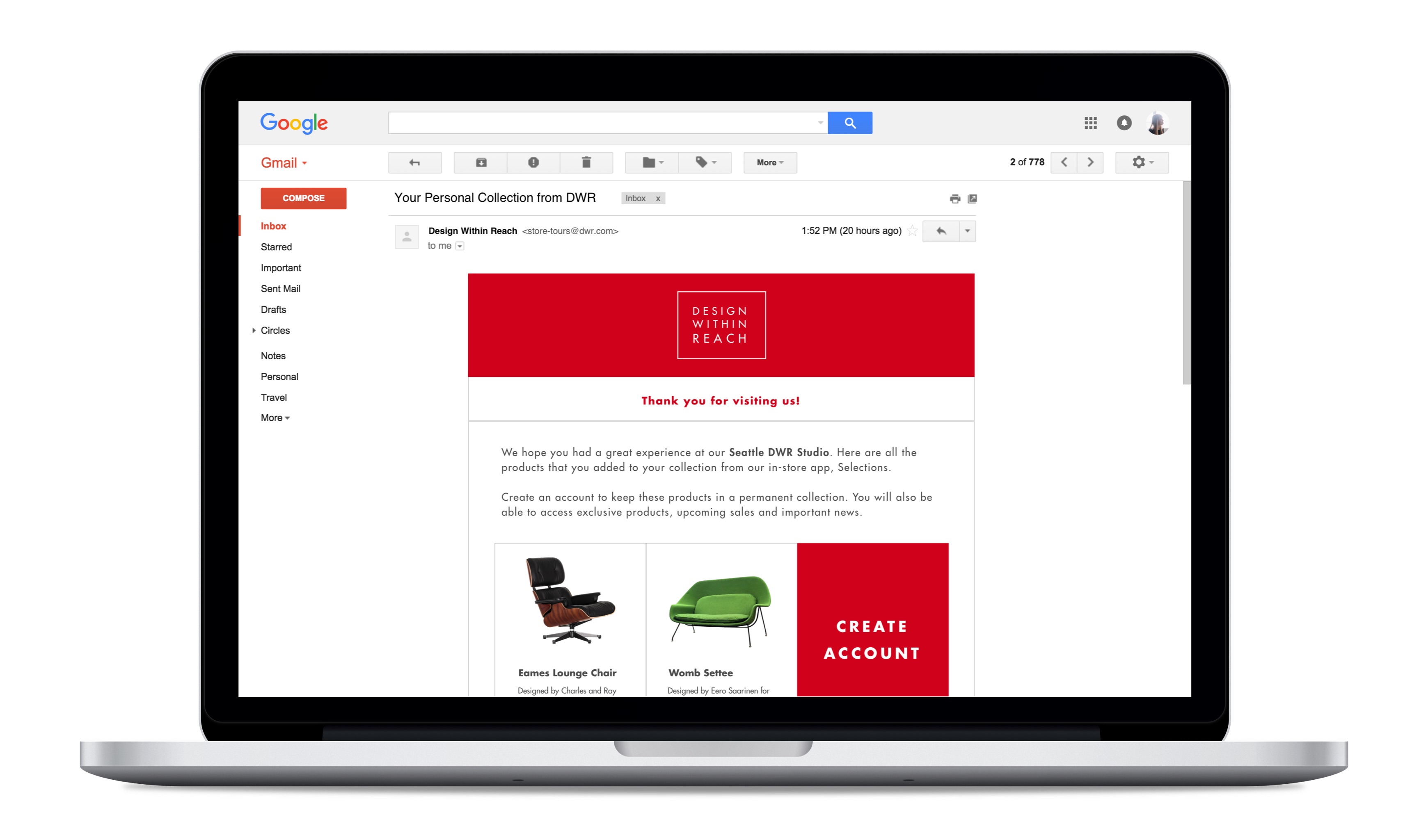
At the end of the project, we went down to Inform Interiors to film our showcase video. We got to interview the store staff again regarding our pitch and solution. The staff reaffirmed that painpoints we were addressing were valid, and our concept was well received.
In the future I would like to look more into the technological feasibility of our project, as well as how we would market and get users to try the app. I would also want to invest more time into real user research and testing. Finally, I would also like to consider ways we can accomodate and provide value to return customers, who are already more familiar with design and the products.
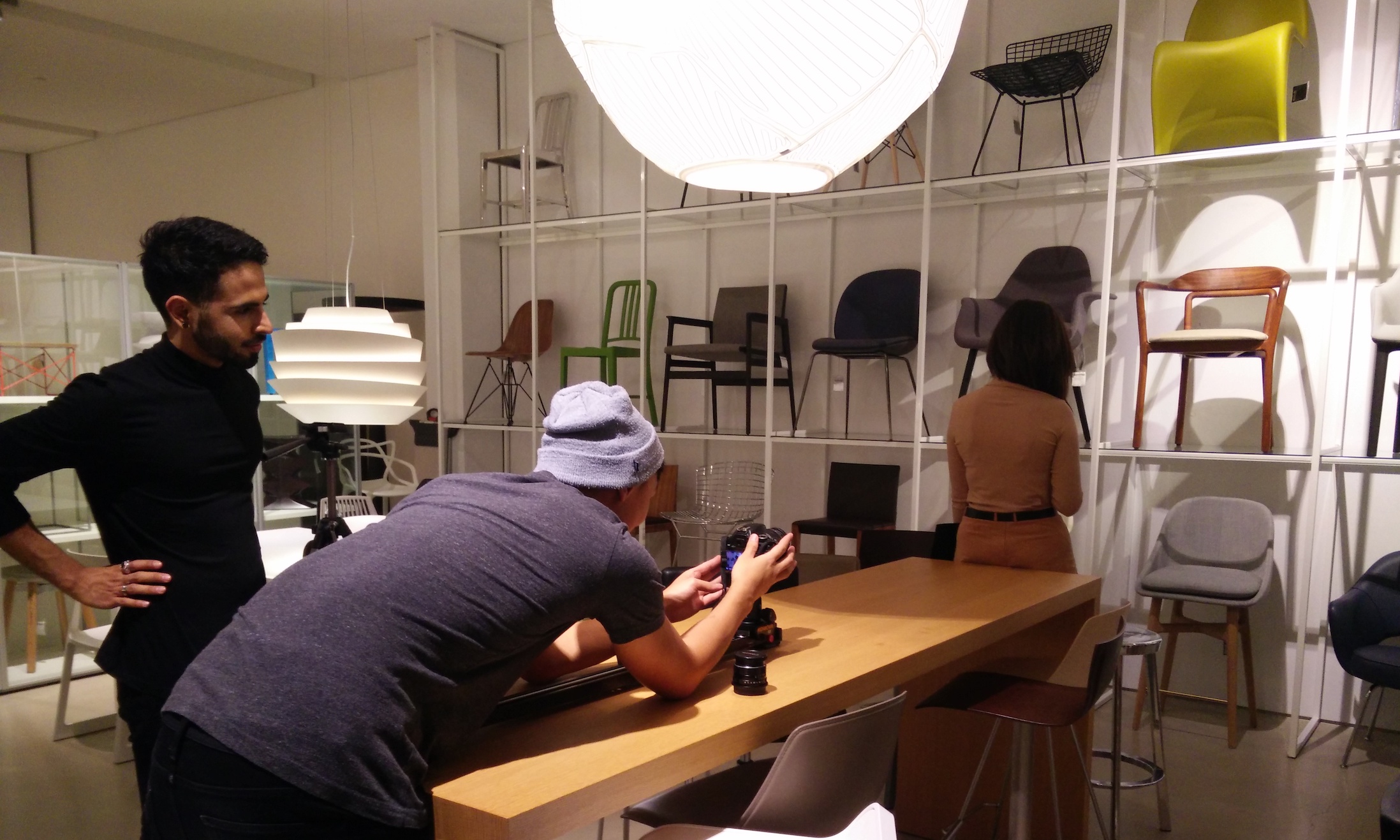
Malcolm Kutar, Cyrus Lau, Valerie Cheng, Gary Li